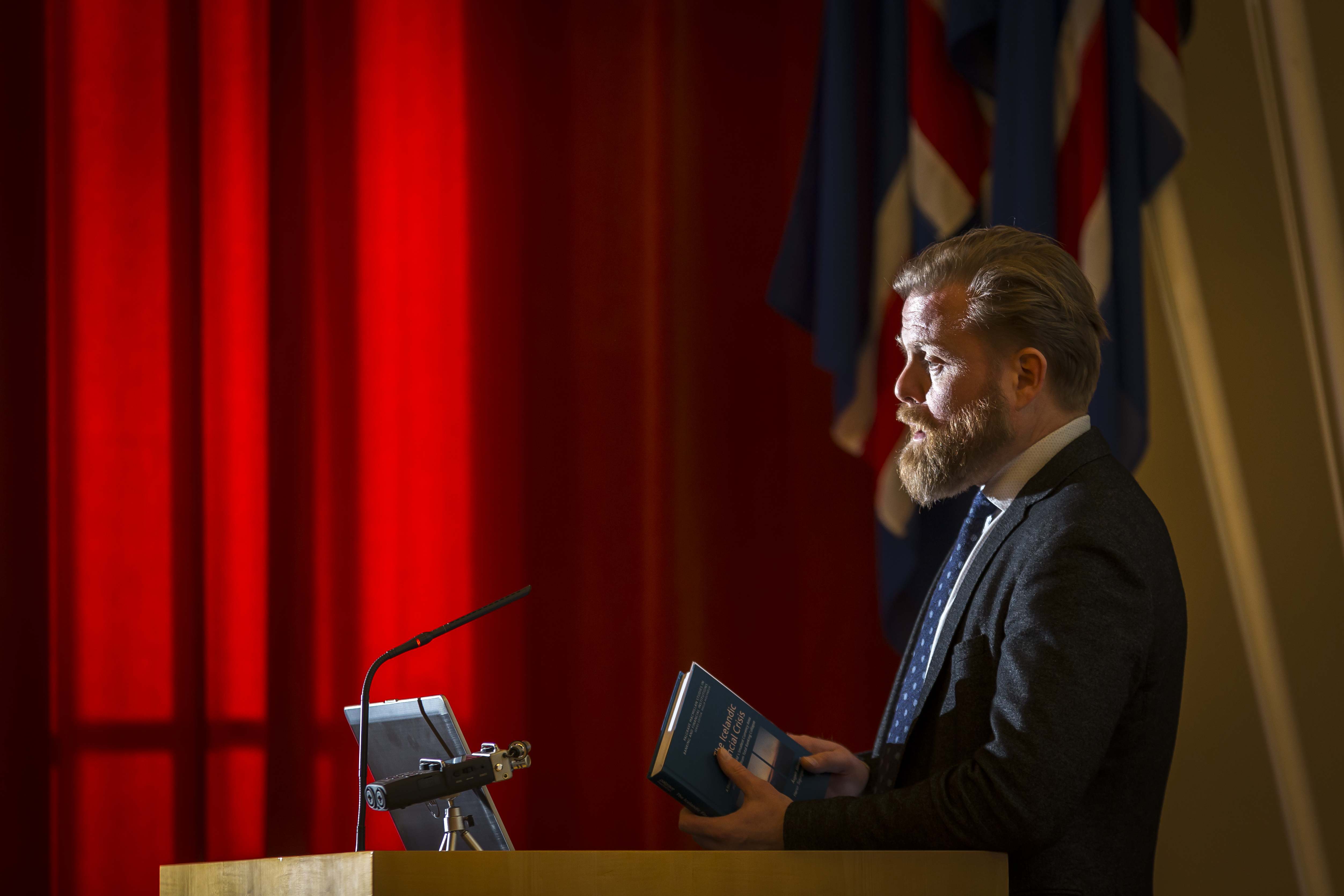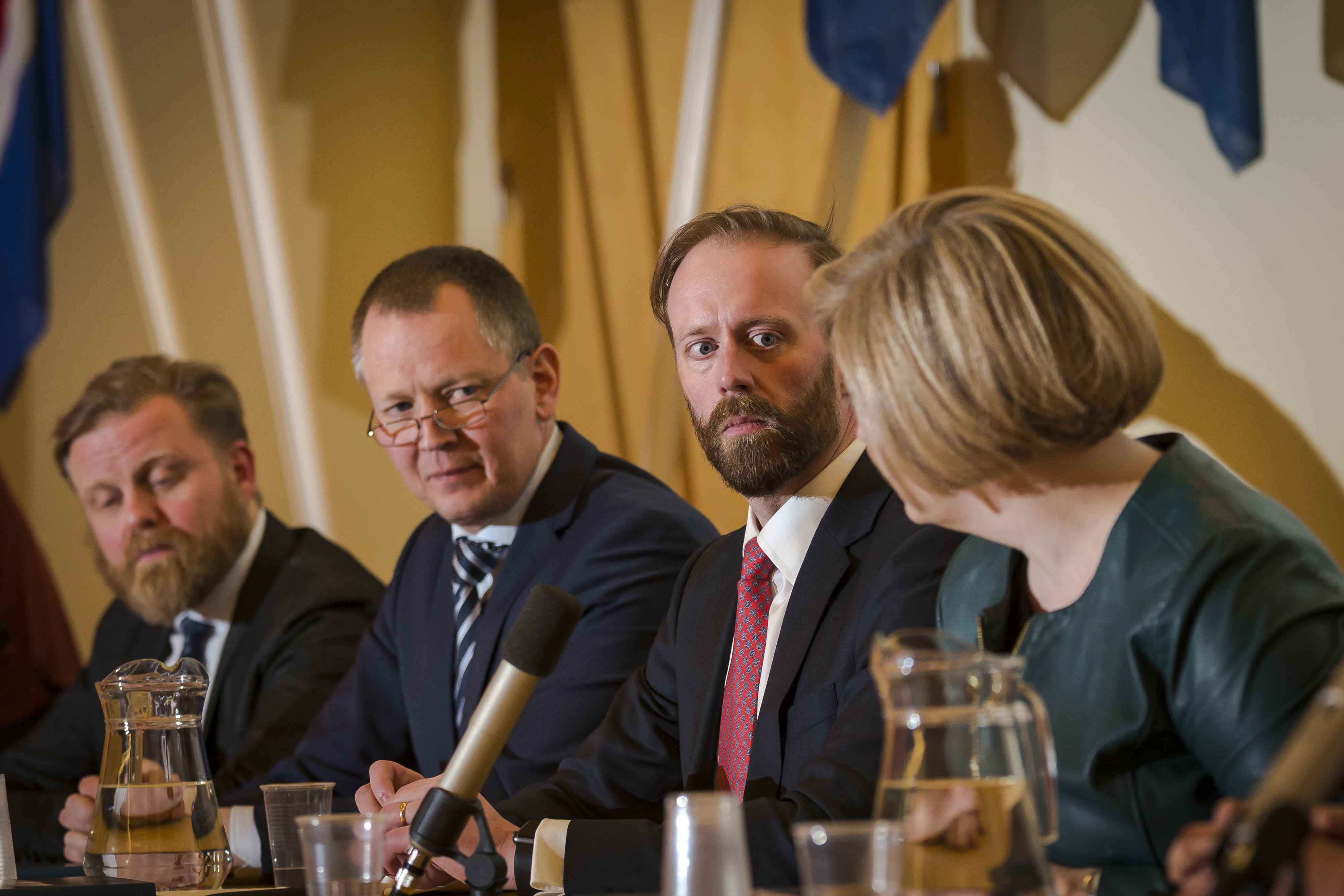Two experts in finance, Professors Asgeir Jonsson and Hersir Sigurgeirsson of the University of Iceland, presented the main findings of their new book, The Icelandic Financial Crisis: A Study Into the World’s Smallest Currency Area, at a conference at the University of Iceland 1 March 2017. Among many interesting facts and figures in their book are the following:
- By the Emergency Act of 6 October 2008, passed under the then coalition government of the Independence Party and the Social Democrats, but initiated by the Central Bank, Iceland chose not to “socialise” the cost of the 2008 collapse of all three main Icelandic banks, or in other words to pass the cost over to taxpayers. Bank shareholders lost the whole value of their shares, and bondholders lost a lot of the value of their bonds, whereas depositors lost nothing.
- It turned out that in the end, the Treasury lost nothing either. Indeed, it made a gain. The reason was that the Treasury was, because of the currency controls imposed in the beginning of the crash, in a strong bargaining position against the creditors to the old banks (mainly hedge funds) who were willing to accept heavy discounts on their claims in order to have the remainder paid out in foreign currencies. The centre-right government which came into power in 2013 regarded it as fair that the old banks (or rather their estates) should bear the costs that they had imposed on the nation.
- The Emergency Act, by giving depositors priority over other creditors of the banks, brought about a transfer of about €10 billion from those creditors—not least German banks—to the depositors—not least affluent Englishmen. There was a widespread misunderstanding abroad that the Emergency Act discriminated between foreign and domestic depositors which it did not do: it discriminated between depositors and bondholders.
- The outlook for Iceland was pretty bleak, however, in the beginning of the crash. Public debt increased by 70% of GDP as a result of the crash, more than in any other European country except Ireland. Iceland was widely, if wrongly, regarded as bankrupt.
- The British and Dutch governments, having unilaterally compensated all depositors in Landsbanki’s branches in their respective countries, demanded that the Icelandic Treasury pay them back, with interest. This would have amounted to an obligation of about €4 billion, or about half of Iceland’s GDP. Ultimately, Landsbanki’s estate could reimburse the two governments. While their demands caused a bitter dispute with Iceland, they were eventually rejected by the EFTA Court.
- The main costs for the Treasury of the crash stemmed from the loss the Central Bank made on its loans to the banks—around €2 billion, €1.7 billion because of non-secured loans to the banks and €245 million because of an emergency loan to Kaupthing with collateral in Danish FIH Bank—and from the collapse of a savings association in Keflavik, €140 million. Even if the authors refrain themselves from political judgements, these losses could have been less if Mar Gudmundsson, CBI Governor from 2009, had not made a bad deal in selling FIH Bank and if Steingrimur J. Sigfusson, Finance Minister 2009–11, had not insisted on helping the savings association in Keflavik.
- Despite Iceland’s success, it is not necessarily a model which should be imitated elsewhere, the authors persuasively argue in their book. Iceland’s special circumstances facilitated the two-fold strategy of “ring-fencing” by establishing new domestic banks on the basis of domestic deposits and putting the foreign operations of the old banks into resolution and of transferring the costs of the crash from depositors to bondholders (largely foreign).
- The rapid recovery of Iceland should not surprise people as much as it did: The Icelandic economy is basically sound, resting on the pillars of profitable fisheries, ample energy resources and considerable human capital, to which was added a sudden and unexpected tourist boom after the crash. Moreover, the banks’ assets turned to be much more valuable than originally expected.
Participating in a panel after the authors’ presentations were Dr. Sigurdur Hannesson, special adviser to the 2013–6 government, Kristrun Heimisdottir, Assistant to the Foreign Minister during the crash (Ingibjorg S. Gisladottir from the Social Democrats) and Johannes Karl Sveinsson, legal adviser to the government. Heimisdottir lamented the fact that the Icelanders did not stand together in the face of adversity as did the Danes, for example. Instead, some politicians used the opportunity to seek vengeance for old grievances. She also emphasised that Iceland had to reconsider her foreign policy in light of the fact that she had very few real friends. The Americans were not any more protecting Iceland as they had done during the Cold War, as shown by their refusal to make dollar swap deals with the CBI before the collapse, at the same time as they made such deals with the three Scandinavian central banks, enabling those central banks to rescue local banks.




